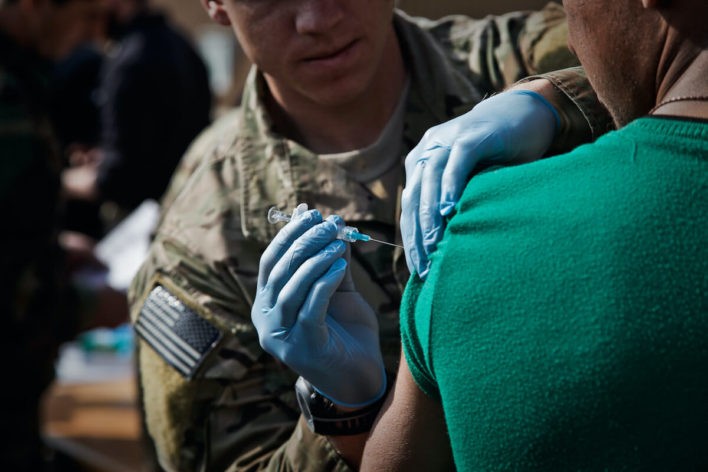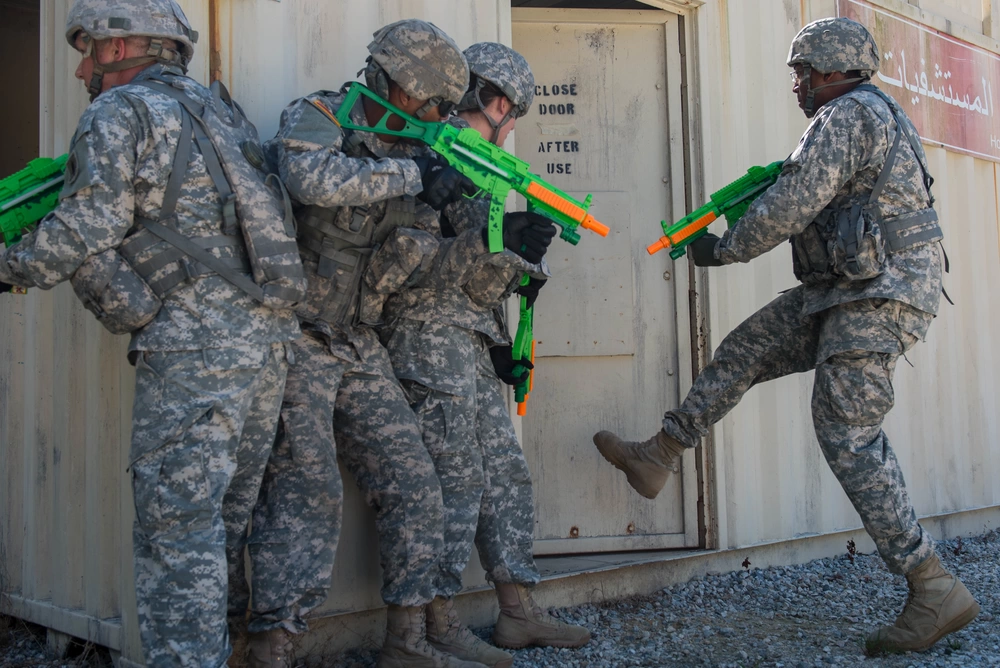VA Begins COVID-19 Vaccination

COVID-19 Vaccinations Begin for VA
As of January 19th, 2021, the US surpassed 400,000 deaths related to COVID-19. As of December 2020, approximately 5,500 of those occurred within the VA system1. The U.S. Department of Veterans Affairs (VA) began administering COVID-19 vaccines just days after the first COVID-19 vaccine received FDA-approval1, 2.
Coronavirus, pandemic, COVID-19, and vaccine are words that will forever define the year 2020. The United States (US) declared a public health emergency in January1. In March, the World Health Organization (WHO) declared a global pandemic1. Individual experiences varied between March and December – blurry and all blended together are common descriptors of these months.
In December 2020, the U.S. Food and Drug Administration (FDA) approved two COVID-19 vaccinations: Pfizer-BioNTech2 and Moderna3. One key difference between the two vaccines is storage requirements. The Pfizer-BioNTech vaccine must be stored in an ultra-low temperature freezer between -112°F and -76°F2, and the Moderna vaccine must be stored between -13°F and 5° F 3.
>> Are you a veteran? Frustrated with your VA disability rating? Register for a free consultation for help with increasing your rating to get the compensation you deserve. Please go here.
Plan to Vaccinate Veterans
Vaccinating a huge population, like veterans, requires strategic planning and collaboration between organizations to ensure the vaccines are distributed safely and effectively. The VA released a COVID-19 Vaccination Plan for the Veterans Health Administration (VHA) to do just that on December 14th, 2020. Important aspects of this plan are summarized in the following sections.
Priorities and Guiding Principles
Guiding principles are outlined in the COVID-19 Vaccination Plan for the VHA1:
- The primary goal is to lower the risk of infection, prevent severe disease related to COVID-19, and minimize the spread of the virus.
- The safety of VHA staff and veterans is the highest priority.
- The third guiding principle outlines how risk stratification, vaccine distribution, and accessibility to the vaccine should be carried out1. This guideline includes the use of evidence and maximizing benefits of COVID-19 vaccination for veterans1.
Vaccine Distribution Plan
The COVID-19 Vaccination Plan addresses offering vaccines for veterans, staff, and caregivers in the U.S. Puerto Rico, and US territories1. VHA employs 400,000 people and serves 6.4 million veteran beneficiaries through the VHA1. The availability of COVID-19 vaccinations, the ability of healthcare facilities to properly handle and store the vaccine, and vaccine safety are considered in the VA’s vaccine distribution plan1.
The VA predicts a limited supply of COVID-19 vaccinations initially and wider vaccine availability in 2021. Vaccinations will first be provided to VHA healthcare workers and veterans living in long-term care units in 37 locations across the country. These locations were selected based on their size, ability to vaccinate large numbers of people and vaccine storage capabilities1.
High Priority Populations
People at high risk for negative outcomes due to COVID-19 are among the highest priority groups to receive COVID-19 vaccines. These populations include people over 65 years and those living with1:
- cancer
- chronic kidney disease
- chronic obstructive pulmonary disease (COPD)
- organ transplant recipient
- obesity
- serious heart conditions (heart failure, coronary artery disease, cardiomyopathy)
- sickle cell disease
- type 2 diabetes
Healthcare providers are a high-priority group for receiving COVID-19 vaccination because they provide healthcare services to veterans1. It is also possible that they are high risk for negative outcomes due to COVID-19 due to the reasons listed above.
VA’s Strategic Plan for COVID-19 Vaccines
The VA’s plan is a strategy to meet their goal of offering COVID-19 vaccines to all veterans receiving healthcare through the VHA. When vaccine supply is limited, prioritizing high-risk populations and the people who care for these vulnerable veterans is a way to have the greatest impact when resources are limited.
The blurry months of this pandemic are not over. However, having vaccines and an effective plan to distribute them is a giant step closer to a post-pandemic world.
References
1 U.S. Department of Veterans Affairs. (2020, December 14). COVID-19 Vaccination Plan for the Veterans Health Administration. link
2 Pfizer & BioNTech. (2020, December). Pfizer & BioNTech COVID-19 Vaccine: Fact sheet for healthcare providers administering vaccine (vaccination providers). link
3 Moderna. (2020, December) Moderna COVID-19 Vaccine: Fact sheet for healthcare providers administering vaccine (vaccination providers). link
RELATED:
- Transitioning From Active Duty During Covid-19: What You Need to Know
- COVID-19’s Impact on Military Retirees’ Compensation
- VA Aid for Homeless During COVID-19
- VA Evaluates Environmental Hazards and Cancer Risk
- Nursing Students: Paid VA Nurse Residency
- 3 Things to Know About the VA’s New Electronic Health Record
- 10 Best States for Veterans
>> Are you a veteran? Frustrated with your VA disability rating? Register for a free consultation for help with increasing your rating to get the compensation you deserve. Please go here.
About the author
Lori Waddell serves as Co-director of an emergency response COAD in Montana, a freelance writer, and an Air Force Key Spouse. She is passionate about empowering communities and individuals through knowledge and resources. She currently lives in Montana with her husband and two children.


